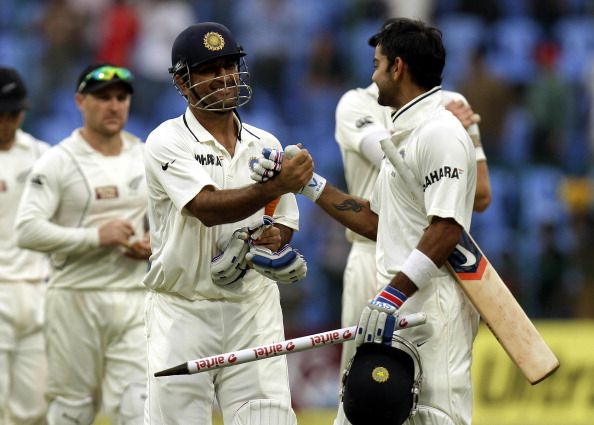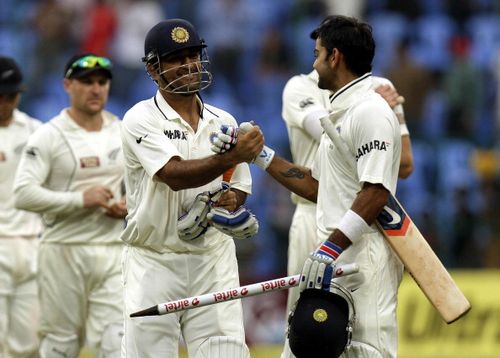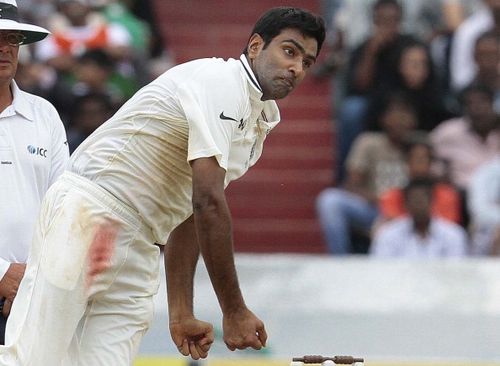
Cricket: What has really changed with the Indian team

2012 has not been a good year for Indian cricket, especially the overseas tours. We suffered a 4-0 loss to both Australia and England in their respective territories. Then we were waiting for the arrival of these teams on our land with a hope that the scoreline would be the same, in our favour. However, none of these expectations were met when the Englishmen left. The scoreline was not the same but what was more hurtful for the fans was that the winning team was still the same.
There is not much difference in the two teams’ composition. Neither team has the services of a player who has adequate experience of playing on Indian pitches. We have already seen how England’s success was dependent on Alistair Cook’s form and the same position is held by Michael Clarke for Australia.
Also, in the first Test, the winning margin was almost the same. But after the second Test, the difference is obvious. So, what has changed with the Indian team is the question.
If you analyze the fourth Test of the series against England and then the series against Australia, you are bound to infer a certain change in mindset of the Indian team players, team and coach. Against England, when we were trailing by 2-1 in the series, we needed to be more aggressive in the final Test, but in fact we switched to defensive mode. In the 1st innings, when we lost wickets early at the start, Dhoni and Kohli stabilized the innings, but at a very slow rate. The objective was to avoid defeat and let England take away the series. Forget an overnight declaration with a notional deficit of 33 runs to give the time to bowl England out, India meandered next day for 62 precious minutes for just 29 runs. Even the Englishmen were happy with the Indian team approach. Now compare this with the Tests against Australia. The intent to win is quite clear. In the first Test, right from the start of his innings, Dhoni played in an attacking manner and in spite of losing partners at the other end, Dhoni played aggressively and sensibly to give enough time to his bowlers to capitalize on the lead. Even in the second Test, Vijay and Pujara started slowly, but as they spent some time, they were more comfortable with behavior of wicket and started played classy shots to enhance the momentum.
Another major difference was the spin attack of the opposition as well as improvement in our spin attack. We saw how the inclusion of Monty Panesar altered the result of series and we know how effective Graeme Swann is with his revolving balls. Australia doesn’t have such world class Test spinners. There was a time when the likes of Erapalli Prasanna, Bishan Singh Bedi and Venkataraghavan kept the batsmen guessing even on pitches that had very less in it for spinners. After the England series, it appeared like even on wilting, dusty turners, Indian spinners don’t hold the same threat. It was probably the first time in Indian cricket’s history that a visiting team from outside the subcontinent has had the services of better spinners.

Ashwin, the player of the series, has shown tremendous improvement. In Australia, finger spinners get very little assistance, but he was expected to perform much better against England in India. He made his debut in the Indian team through his performance in T20, where if you keep bowling at the same spot, you are bound to concede runs. This results in an inconsistent line and length. Ashwin tried too much against England, but in a Test match, you need to keep the batsmen occupied with a particular length. To deceive the batsmen, you need to take different routes to the same destination. However, if you look at Ashwin’s pitch map against Australia, it is quite clear he has learnt from his mistakes and he bowled with a particular length and suddenly delivered a ball which traps the batsmen and gets the wicket.
Pragyan Ojha is a classical Test spinner because, as prescribed in practice sessions, he keeps bowling on an imaginary handkerchief all day long. Thus, dropping him from the Test side for the first two matches was a huge disappointment. When Ojha made a return to the side in the 3rd Test, the challenge for him was to bowl effectively on those pitches which were not so helpful to spinners as compared to first two Tests. He may not have been among the pick of the bowlers in terms of wickets, but his bowling was quite effective. He has had some classical leg-spinner dismissals during the test.
Ravindra Jadeja was a storm in the series. His effectiveness with spin is because he keeps it simple and doesn’t try too much, which is very important on Indian pitches. He picked up the most important scalp of the Australian captain in 6 of the 8 times. On a tricky pitch at Kotla, he played a crucial knock when Indian batting was crumbling.
Also, the pace attack has been effective against Australia. Bhuvaneshwar Kumar provided early breakthroughs and Ishant Sharma picked up wickets at crucial stages. These two set the stage for the debacle of the Australian batting line up.
The Indian batsmen also delivered in each innings. We had a lead in all of the four first innings and this ensured that the path was relatively easy in the second innings. In fact, each batsman contributed to the total. In terms of batting, the highlight was the electrifying knock by debutant Shikhar Dhawan. Also, the calm and steady innings of Pujara and the role of anchor played by Murali Vijay helped India lay a strong foundation. As against England, we were not dependent on Ashwin to score runs.
Hope this change benefits team India in the long term and we can show some improvement in performance on foreign soil. This will help regain the lost glory and the South Africa tour in the winter this year is the best way to attain it.